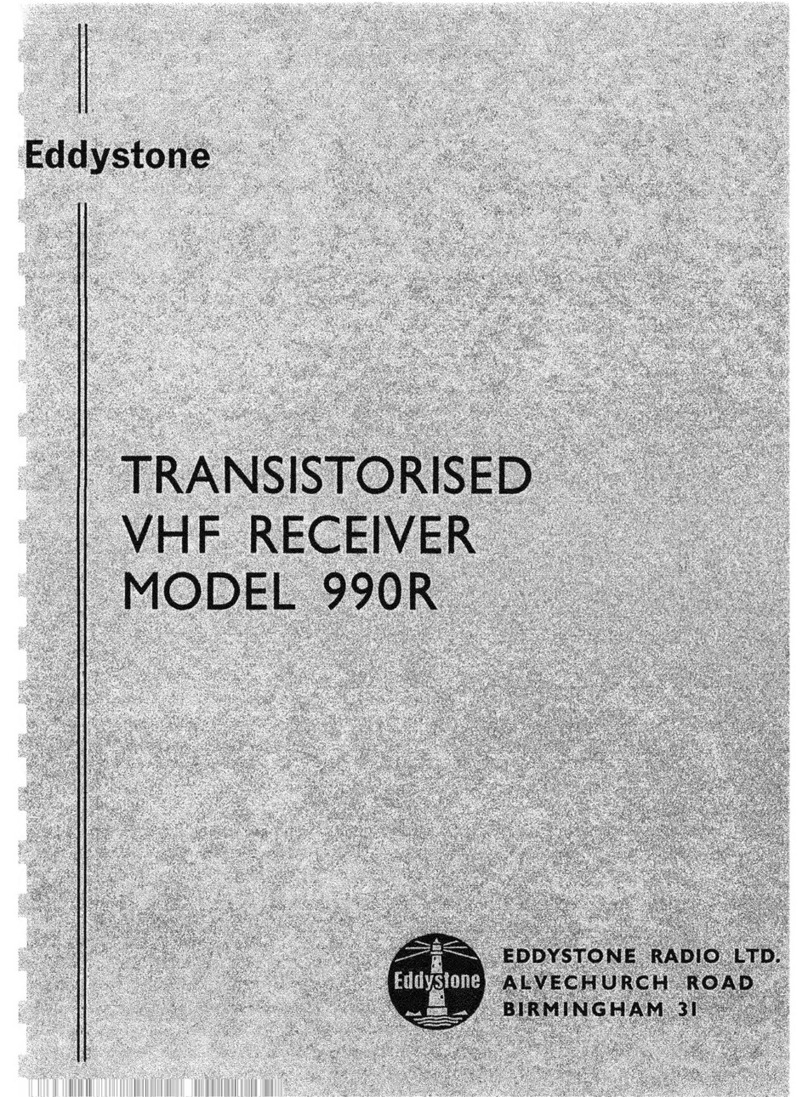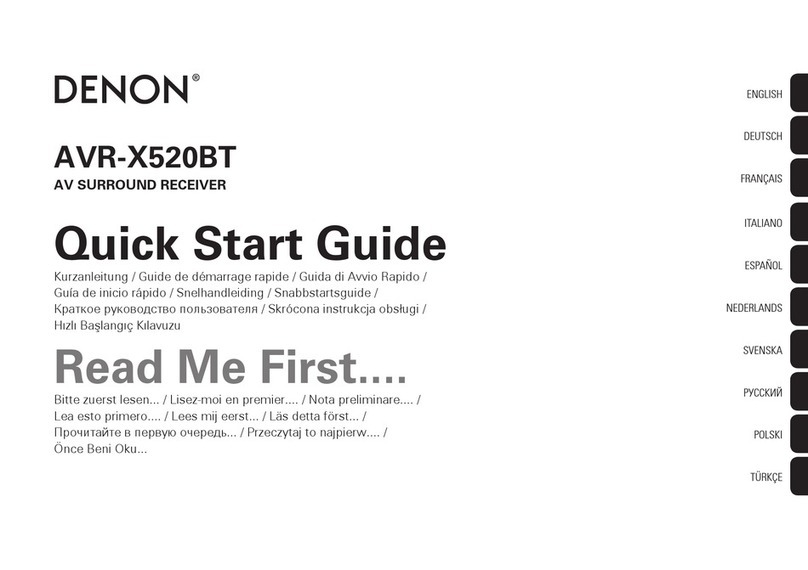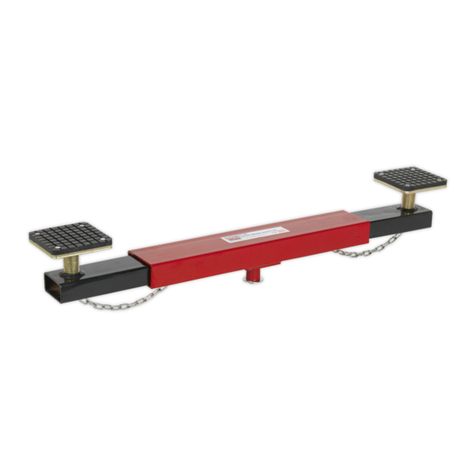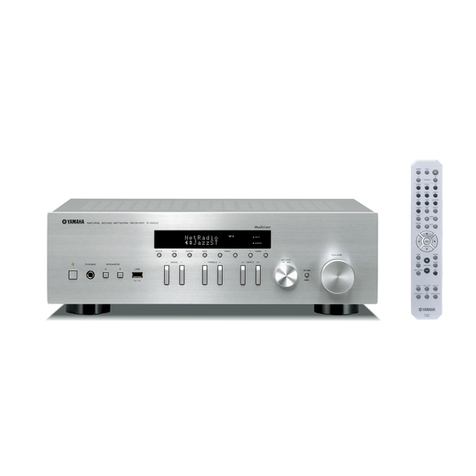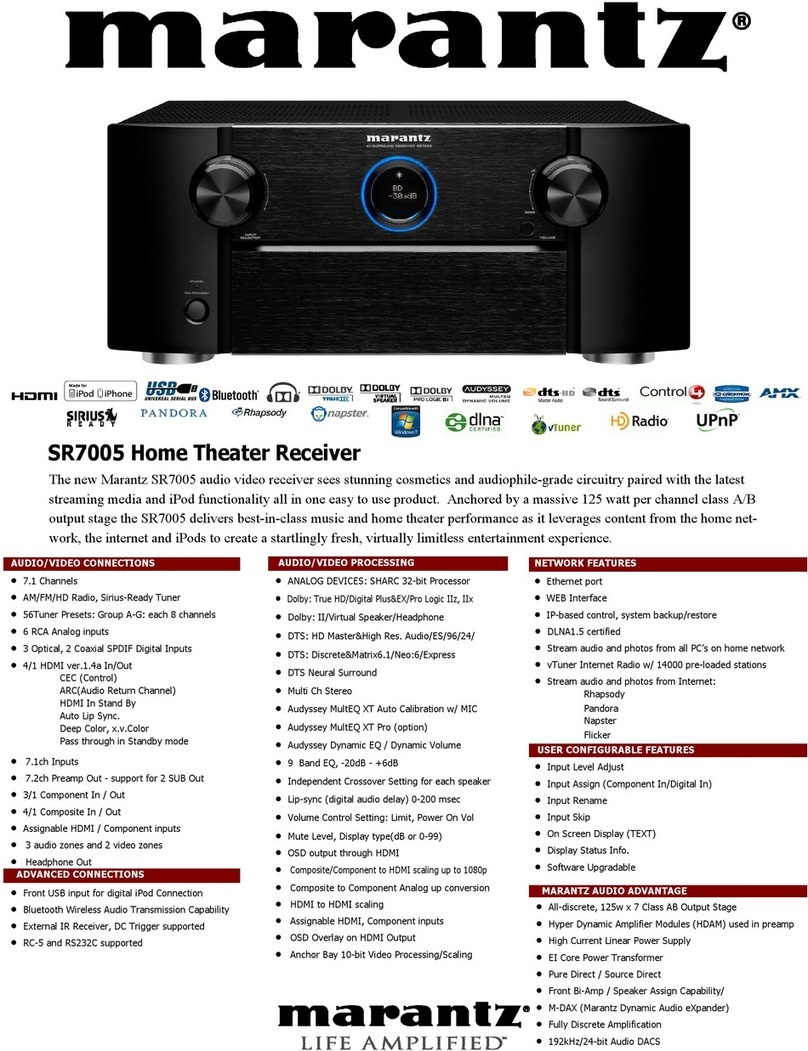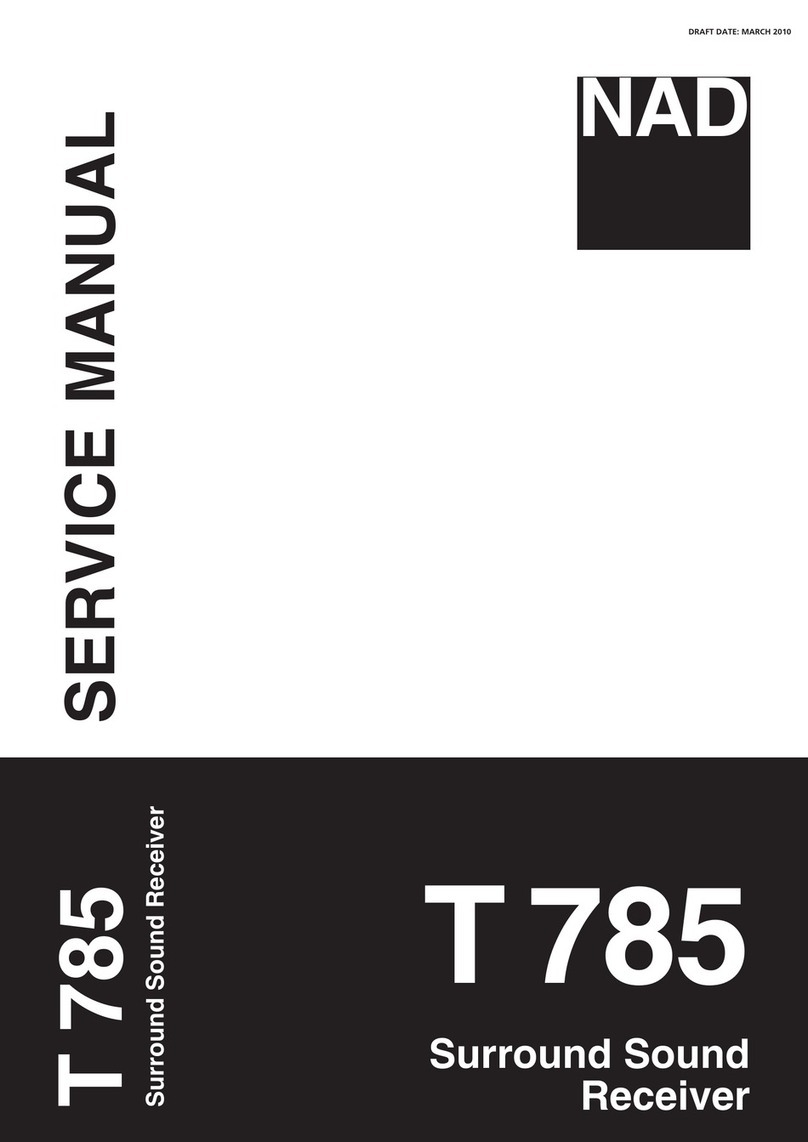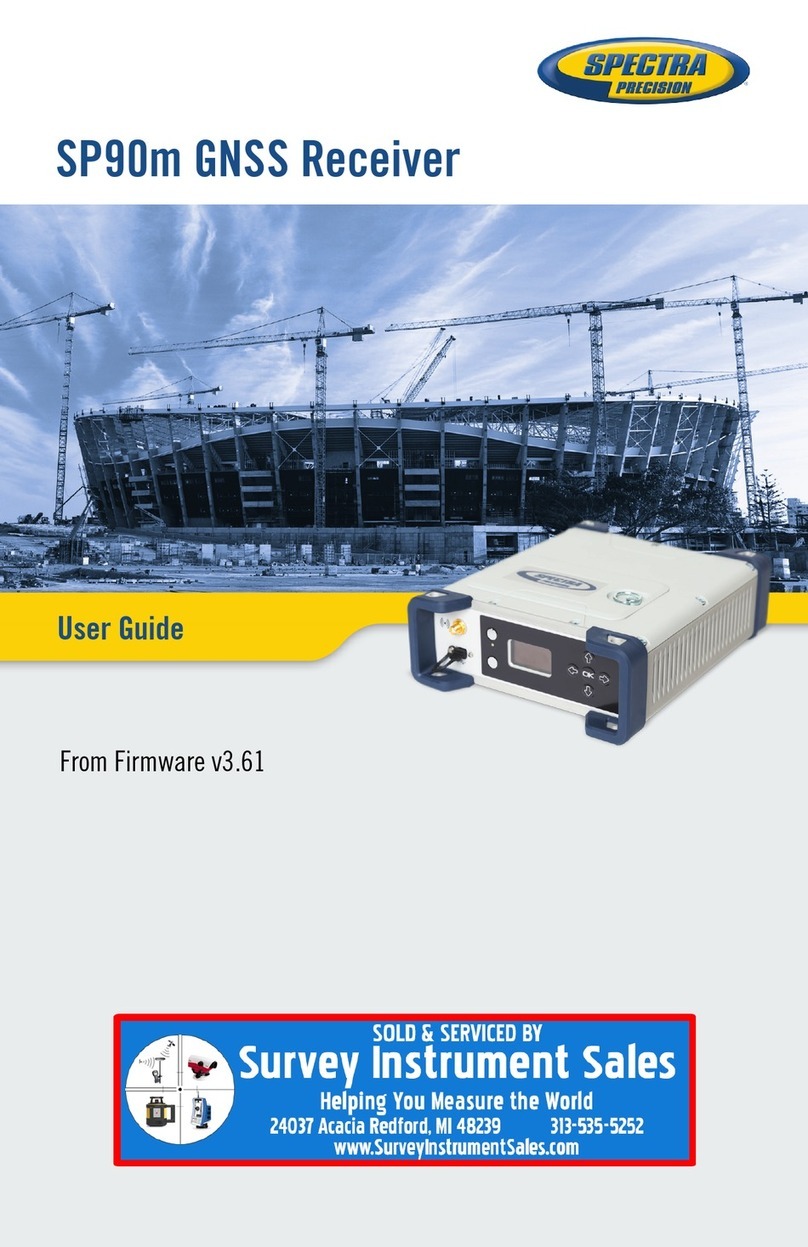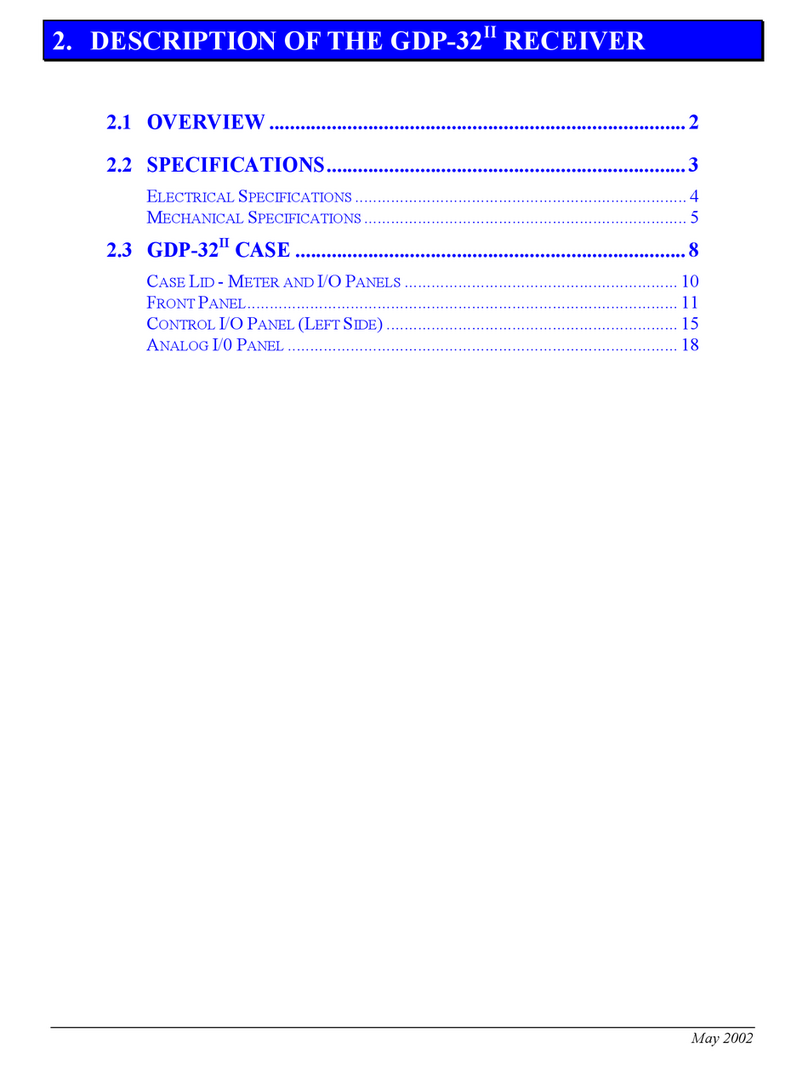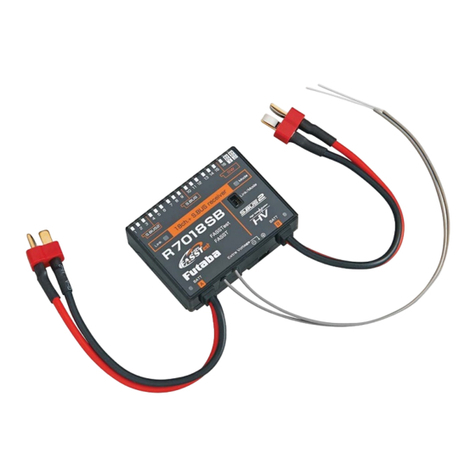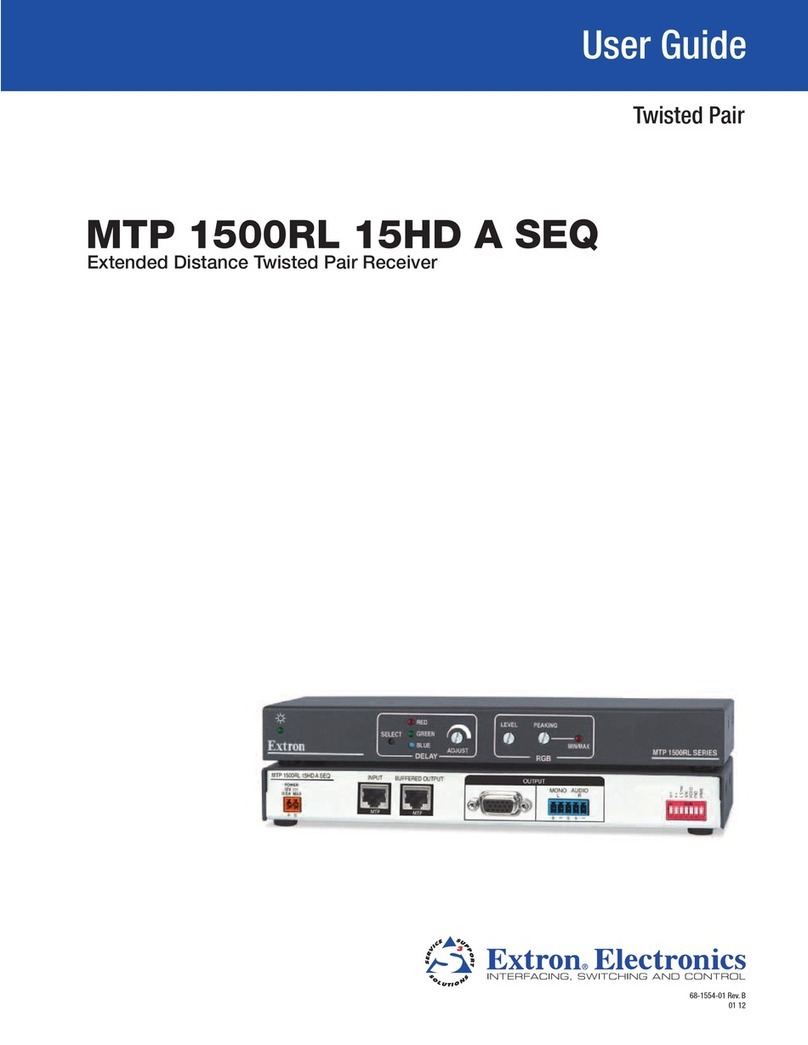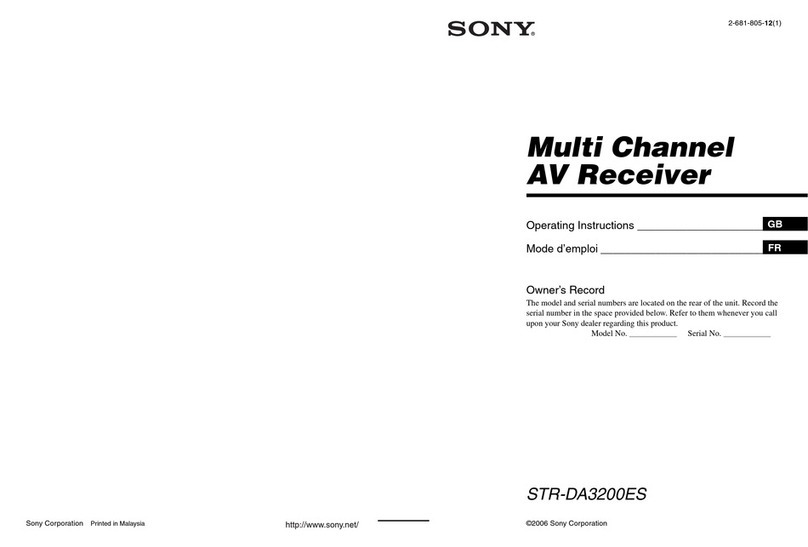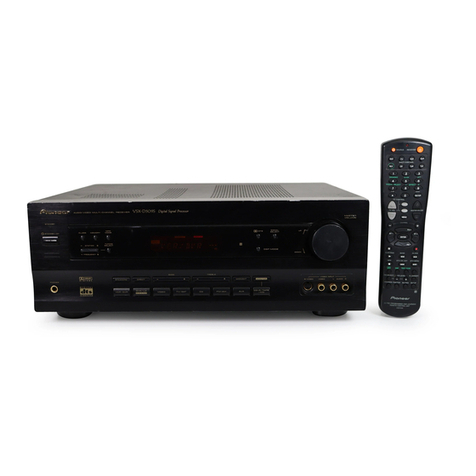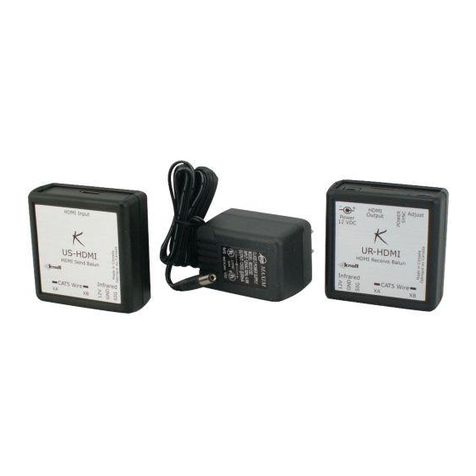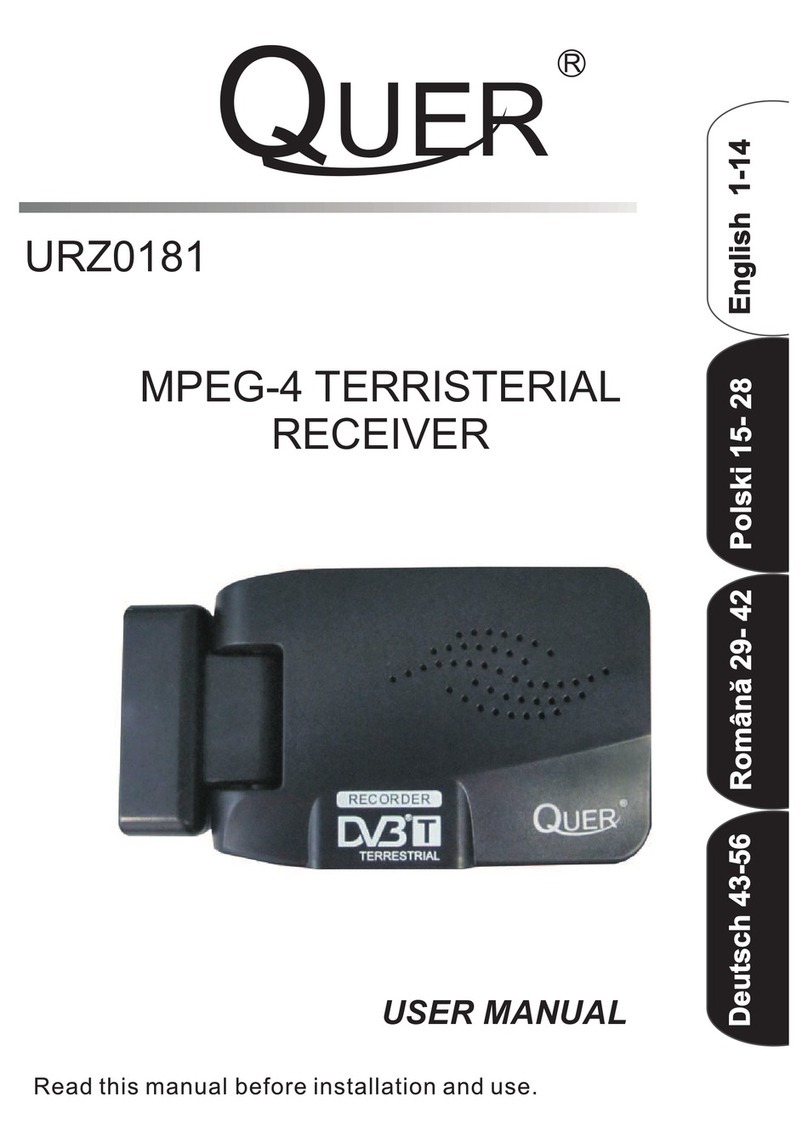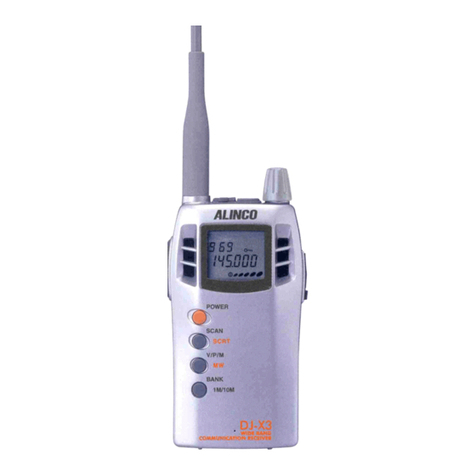General Dynamics DIGITAL TRACKING RECEIVER User manual

CG-1220
REV V
JUNE 2013
OPERATION AND MAINTENANCE MANUAL
FOR THE
DIGITAL TRACKING RECEIVER
EXPORT CONTROL WARNING - the disclosure of this
document or its contents to non-U.S. persons, or the
transmission of its contents outside the United States must
be in compliance with U.S. Export Laws and Regulations.
The bearer of this document is under obligation to know the
applicable restrictions for the dissemination of its contents
that relate to U.S. Export Laws and Regulations or any other
U.S. government approvals.
3750 W. Loop 281
Longview, Texas 75604

Revision History
V- Section 1.1.2 L. Shirey C. Bolton 6/7/13 13359
U- Section 4.2.1 & 4.2.5.3 L. Shirey C. Bolton 5/21/13 13339
T – CPU FIRMWARE V2.3 filters B. Tanner D. Bulgrien 6/6/12 11559
S – Revised Section 3.3.1.1.2 D. Cunningham D. Harrison 2/9/12 11356
R – Updates for CE Certification B. Tanner S. Martinez 1/10/12 11147
P – Correction to FIFO Test (4.2.7) B. Tanner D. Harrison 9/16/10 10150
N – Battery Maintenance Updates B. Tanner D. Harrison 8/4/09 8937
M – SPDTx4 status changes B. Tanner C. Bolton 10-13-08 8195
L – Amended Detection Description A. Weaver D. Weis 7-1-08 8008
K – I/O Status updated M. Neely G. Branch 4-25-06 6629
J – Freq expanded to 945-2055 M. Neely G. Branch 2-06-06 6456
H – STUV freq. digits added M. Neely G. Branch 11-4-05 6183
G – ECW & Diversion Stmt M. Neely G. Branch 3-22-05 5718
F – Sig. Update, ATTN, etc. M. Neely G. Branch 10-18-04 5468
E – For v1.19.13 M. Neely G. Branch 7-21-04 5355
D – 201800 Update M. Neely G Branch 4-30-04 5192
C – 4 Port Option M. Neely G. Branch 10-10-03 4832
B – Misc. M. Neely D. Bulgrien 9-25-01 ---
A – First major release M. Neely D. Bulgrien 7-10-00 ---
Initial release M. Neely K. Cone 1-26-00 ---
Rev. No/change Revised By Approved By Date ECO#
ii

NOTICES
WARNING
THE ELECTRICAL CURRENTS AND VOLTAGES IN THIS EQUIPMENT ARE DANGEROUS. PERSONNEL
MUST OBSERVE SAFETY REGULATIONS AT ALL TIMES.
This manual is intended as a general guide for trained and qualified personnel who are aware of the
dangers of handling potentially hazardous electrical and electronic circuits. This manual is not intended
to contain a complete statement of all safety precautions that should be observed by personnel in
using this or other electronic equipment.
WARNING
IN CASE OF EMERGENCY BE SURE THAT POWER IS DISCONNECTED.
The manufacturer has attempted to detail in this manual all areas of possible danger to personnel in
connection with the use of this equipment. Personnel should use caution when installing, operating,
and servicing this equipment. Care should be taken to avoid electrical shock, whether the hazard is
caused by design or malfunction.
WARNING
ALWAYS DISCONNECT POWER BEFORE OPENING COVERS, ENCLOSURES, PANELS, OR SHIELDS.
ALWAYS USE GROUNDING STICKS AND SHORT OUT HIGH VOLTAGE POINTS BEFORE SERVICING.
NEVER MAKE INTERNAL ADJUSTMENTS OR PERFORM MAINTENANCE OR SERVICE WHEN ALONE
OR FATIGUED.
The manufacturer is specifically not liable for any damage or injury arising from improper procedures
or failure to follow the instructions contained in this manual or failure to exercise due care and caution
in the installation, operation, and service of this equipment or use by improperly trained or
inexperienced personnel performing such tasks. During installation and operation of this equipment,
local building codes and fire protection standards must be observed.
PROPRIETARY NOTICE
All computer software, technical data, or other information pertaining to the equipment covered by this
manual is proprietary to General Dynamics SATCOM Technologies (GDST). Such information is
transmitted in this manual or related documents for the benefit of GDST customers and is not to be
disclosed to other parties verbally or in writing without prior written approval of GDST. Additionally,
this manual may not be reproduced in whole or in part without written consent from GDST.
© 2009 – 2012 General Dynamics SATCOM Technologies
iii

Declaration of Conformity
The Digital Tracking Receiver (200800/201800/201046/201700)
was tested to the following specifications and found to be in compliance
with the required criteria on the indicated test date.
In accordance with the following directives:
72/23/EEC The Low Voltage Directive
and its amending directives.
89/336/EEC
1999/5/EC
The Electromagnetic Compatibility Directive
and its amending directives.
R&TTE Directive
and its amending directives.
It has been designed and manufactured to the following specifications:
IEC 61010-1:1990+A1:1992+A2:1995
EN 300339: 1998
EN 55022: 1998, Class B
EN 61000-4-2: 1995
EN 61000-4-3: 1995
EN 61000-4-4: 1995
EN 61000-4-5: 1995
EN 61000-4-6: 1996
EN 61000-4-11: 1994
I hereby declare that the equipment named above, when installed according to manufacturer’s
instructions, complies with the above directives and standards.
Signed: Date: April 29, 2004
General Dynamics SATCOM Technologies
3750 W. Loop 281
Longview, TX 75604
Telephone: (903) 295-1480 Fax: (903) 295-1479
iv

PREFACE
About This Manual
This manual is intended for anyone who uses the General Dynamics SATCOM
Technologies Digital Tracking Receiver (DTR). First time users as well as
experienced operators will find necessary information about features, installation
and operation of the DTR.
This manual contains only the information related to the DTR, and does not include
information about the antenna structure, the equipment used for positioning the
antenna, and other equipment peripheral to the DTR.
This manual is divided into the following sections:
Section 1.0, Introduction, Identifies standard and optional features of the DTR,
and briefly outlines the components of its front and rear panels.
Section 2.0, Theory, explains the theory of operation of the DTR.
Section 3.0, Installation, outlines installation, pin-outs, setup and initial power-
up of the DTR.
Section 4.0, Operation, describes the operation of the DTR, including menu
structure, navigation and other functional details.
Section 5.0, Maintenance, provides information necessary for maintaining the
DTR.
Section 6.0, Engineering Drawings, contains the engineering drawings.
Appendix A, Technical Support, provides the user with contact information for
customer support.
Appendix B, Menu Tree, contains a complete visual representation of the menu
hierarchy.
Appendix C, Remote M&C Protocol, contains commands necessary for remote
communication with the DTR.
Appendix D, Acronyms and Abbreviations, lists the definitions of all acronyms
and abbreviations used in this manual.
v

vi
THIS PAGE INTENTIONALLY LEFT BLANK

Table of Contents
TABLE OF CONTENTS
1.0................................................................................. 1-1INTRODUCTION
1.1............. 1-1General Information Regarding the Digital Tracking Receiver
1.1.1............................................................. 1-1Explanation of Safety Symbols
1.1.2.............................................. 1-1Technical & Environmental Specifications
1.1.3....................................................................... 1-2DTR Standard Features
1.1.4........................................................................ 1-2DTR Optional Features
1.2................................................................ 1-3Controls and Indicators
1.3...................................................................... 1-4Inputs and Outputs
1.4.......................................................................... 1-5Model Numbers
2.0........................................................................................... 2-1THEORY
2.1................................................................... 2-1Standard L-band DTR
2.2................................................................ 2-2Optional Configurations
2.2.1......................................................................... 2-2Dual Polarization Input
2.2.2................................................................ 2-2Down Converter Frequencies
3.0..................................................... 3-1INSTALLATION AND INITIAL SETUP
3.1................................................................................ 3-1Introduction
3.2................................................................. 3-1Mechanical Installation
3.3...................................................... 3-2Input and Output Connections
3.3.1.............................................. 3-3Input/Output Interface Connector Pin-Out
3.3.1.1.......................................................... 3-3Default Configuration
3.3.1.1.1...................................3-4Analog Output Voltage Pin-Out
3.3.1.1.2...............................................3-4Summary Fault Output
3.3.1.1.3.................................3-5Beacon Select Inputs (GPIO 0-3)
3.3.1.1.4...................................................3-6General Purpose I/O
3.3.1.1.5....3-6External Pol Select Control Lines (GPIO 6-7, 4-5, 8-9)
3.3.1.1.6...........................................................3-6Signal Ground
3.3.1.2.............................................................. 3-7Monopulse Option
3.3.1.2.1................3-8Degree Command Control (GPIO 0-1, 10-15)
3.3.1.2.2...............................................3-8Mute Control (GPIO 2)
3.3.1.2.3.............................................3-8Mute Status (GPIO 8-9)
3.4......................................... 3-9Serial Interface Hardware Configuration
3.5.......................................................... 3-11Initial Setup and Power-up
3.5.1................................................... 3-12Analog Voltage Output (DAC) Setup
3.5.2....................................... 3-12Setting up Beacons for 7134 Remote Control
3.5.3................................... 3-13Controlling DTR with 72XX ACUs via Serial port
3.5.4...................................................................................... 3-14ACU Setup
4.0...................................................................................... 4-1OPERATION
4.1......................................... 4-3Understanding the DTR Menu Structure
4.1.1.......................................................................... 4-3Selecting Menu Items
4.1.2............................................ 4-3What Happens When a Menu is Selected…
4.1.2.1............................................................. 4-3Selects a Submenu
4.1.2.2....................................................... 4-3Opens an Editor Screen
4.1.2.3............................................................. 4-4Executes an Action
4.2........................................................................ 4-5Main Menu Items
4.2.1 ...................................................................................... 4-5FREQUENCY
4.2.2.................................................................................... 4-5INPUT ATTEN
vii

Table of Contents
4.2.3...................................................................................... 4-6POL SELECT
4.2.3.1.................................... 4-6POL SELECT (Multi Port Option Only)
4.2.4.................................................................................. 4-6STATUS MENU
4.2.5..................................................................... 4-9CONFIGURATION MENU
4.2.5.1......................................................... 4-9COMM PARAMETERS
4.2.5.2...................................................... 4-11RECEIVER OPERATION
4.2.5.3..................................................... 4-13CONVERSION BANDS*
4.2.5.4............................................................. 4-14BEACON SETUP*
4.2.5.5................................................................. 4-14MONOPULSE*
4.2.5.6........................................................... 4-16SYSTEM MEMORY
4.2.5.6....................................................... 4-17INTERFACE OPTIONS
4.2.6.................................................................. 4-17ACKNOWLEDGE FAULTS
4.2.7............................................................................................ 4-18TESTS
5.0.................................................................................. 5-1MAINTENANCE
5.1.......................................... 5-1Inspection and Preventive Maintenance
Checking the Battery........................................................................... 5-1
Replacing the Battery .......................................................................... 5-1
5.2........................................................................... 5-3System Spares
6.0.................................................................. 6-1ENGINEERING DRAWINGS
APPENDIX A - TECHNICAL SUPPORT ..........................................................A-1
APPENDIX B – MENU TREE ........................................................................ B-1
APPENDIX C – REMOTE M&C PROTOCOL....................................................C-1
APPENDIX D – ACRONYMS & ABBREVIATIONS ...........................................D-1
viii

Table of Contents
LIST OF FIGURES
Figure 1-1.................................................................. 1-3DTR Front Panel
Figure 1-2................................................................... 1-4DTR Rear Panel
Figure 2-1............................................................. 2-1DTR Block Diagram
Figure 3-1................................................ 3-2L-Band DTR-I/O Connections
Figure 3-2................................................ 3-11Typical Operational Display
Figure 4-1................................................. 4-1DTR Controls and Indicators
Figure 4-2............................................. 4-2Receiver Status Display Screen
Figure 4-3.................................................................. 4-6Spectral Display
LIST OF TABLES
TABLE 1-1............................................. 1-3CONTROLS AND INDICATORS
TABLE 1-2....................................................... 1-4INPUTS AND OUTPUTS
TABLE 1-3............................................ 1-5DTR Model Number Designation
TABLE 1-4............................................ 1-5Frequency Range Chart for DTR
TABLE 3-1.................................... 3-3DESCRIPTION OF I/O CONNECTIONS
TABLE 3-2............ 3-4I/O INTERFACE 1, STANDARD & WIDEBAND CONFIG.
TABLE 3-3............ 3-4I/O INTERFACE 2, STANDARD & WIDEBAND CONFIG.
TABLE 3-4.............................. 3-7I/O INTERFACE 1, MONOPULSE CONFIG.
TABLE 3-5.............................. 3-7I/O INTERFACE 2, MONOPULSE CONFIG.
TABLE 3-6........... 3-9DEFAULT SERIAL INTERFACE SETTINGS (PORTS 1&2)
TABLE 3-7................... 3-9SERIAL INTERFACE PORT #1 PIN-OUTS (RS-232)
TABLE 3-8............ 3-9SERIAL INTERFACE PORT #2 PIN-OUTS (RS-232/422)
TABLE 3-9............... 3-10DEFAULT SERIAL INTERFACE SETTINGS (PORT 3)
TABLE 3-10................. 3-10SERIAL INTERFACE PORT #3 PIN-OUTS (RS-485)
TABLE 3-11 DTR TO 7200 ACU SERIAL CONNECTIONS MATRIX ............ 3-13
TABLE 3-12a................................ 3-13RS-232 CONNECTIONS TO 7200 ACU
TABLE 3-12b................................ 3-13RS-422 CONNECTIONS TO 7200 ACU
TABLE 3-12c................................ 3-13RS-422 CONNECTIONS TO 7200 ACU
TABLE 3-13.................................... 3-14EXAMPLE OF COMM PARAMETERS
TABLE 4-1............................................. 4-1CONTROLS AND INDICATORS
TABLE 4-2................................................ 4-2RECEIVER STATUS DISPLAY
TABLE 5-1.................................................................... 5-3SPARE PARTS
ix

Table of Contents
x
THIS PAGE INTENTIONALLY LEFT BLANK

Introduction
1.0 INTRODUCTION
1.1 General Information Regarding the Digital Tracking
Receiver
The DTR, developed for satellite tracking, is a fully synthesized tracking receiver.
The Digital Signal Processor (DSP) based receiver accepts wideband RF inputs,
performs frequency selection, down-converts RF to 70 MHz, and digitally
processes the digital samples.
The DTR’s user interface is powerful and intuitive giving the operator the ability to
custom configure specific applications in a very straight forward manner. The
unit’s versatile settings allow the unit to interface with a wide range of next-level
system components.
1.1.1 Explanation of Safety Symbols
Symbol Explanation
Protective Earth/Ground Terminal
Caution, Risk of Electric Shock
Caution, Risk of Danger.
Consult accompanying documents.
1.1.2 Technical & Environmental Specifications
DTR Dimensions 3.5 in. High (8.9 cm) x 19 in. Wide (48.3 cm) x 22 in. Deep (55.9 cm)
DTR Mass 25 lbs (11.3 kg)
DTR Maximum Power 1 A
DTR Maximum Operating Altitude 6500 ft (2000 m)
Input Power 110-240 VAC, 50-60 Hz,
Operating Temperature & Humidity 0 to 50 C, Up to 90% non-condensing humidity
Non-Operating Temperature & Humidity -15 to 50 C, Up to 90% non-condensing humidity
1-1

Introduction
1.1.3 DTR Standard Features
The following are the standard features of the DTR:
Input frequency range of 945 MHz to 2055 MHz for L-band configuration
Wide input signal dynamic range (70 dB Nominal)
Sensitivity signal range of –40 dBm to –110 dBm
Minimum C/No better than 35 dB/Hz
Synthesized tuning
Tuning resolution of 1 kHz
Selectable tracking slope
Signal linearity (.5dB over a 10dB nominal tracking range)
Intelligent signal/side-band recognition
240x64-pixel graphics display
User interface with logically grouped menus
Optimal mix of “dedicated and soft keys” for efficient menu navigation and data
entry
Spin knob for alternate means of tuning and adjusting parameter values
Dedicated online Help key
Remote control capability (RS-232, RS-422, RS-485, contact closures)
Front panel 70 MHz monitor port (50 BNC female)
Real time spectral display of tracking signal
Field upgradeable software
C/No and power measurement information display
Compatibility with TRL series L-band Tracking Receivers, including I/O interface
and serial communications protocol
Selectable input attenuator of 0 – 30 dB in 2 dB steps
Adjustable bandwidth filter options from 16 kHz up to 500 kHz
1.1.4 DTR Optional Features
Input frequency range covering S, C, X, Ku and Ka-band configurations
Up to 6 RF inputs
Dual polarization input
Multi-band switching
Single/dual channel monopulse tracking
Wideband operation
Complete backward compatibility with TRL series L-band Tracking Receivers,
including monopulse interfaces and TBT (Tracking Band Translator) support
Rack Slides
1-2 CG-1220 DTR

Introduction
1.2 Controls and Indicators
The controls and indicators located on the DTR front panel provide the normal
operator interface. The DTR front panel is shown in Figure 1-1 with its controls
and indicators identified. The function of each is detailed in Section 4, Operation.
1 32 4 5 6 7
Figure 1-1 DTR Front Panel
TABLE 1-1 CONTROLS AND INDICATORS
1. Receiver Status Display
2. Soft Keys
3. Navigation Keys
4. Status Indicators
5. Numeric Keypad
6. Spin Knob
7. IF Monitor Port
1-3

Introduction
1.3 Inputs and Outputs
The inputs and outputs located on the DTR rear panel provide the external
interfaces. The number of inputs varies with user configuration. The DTR rear
panel is shown in Figure 1-2. The function of each input and output is listed in
Table 1-2.
4 3 2 1
6 5
Figure 1-2 DTR Rear Panel
TABLE 1-2 INPUTS AND OUTPUTS
CONNECTOR FUNCTION
1. RF Input: Provides up to 6 selectable inputs for RF signals in the following bands:
Type N Connector
L-band S-band C-band X-band Ku-band
Type SMA Connector Ka-band
2. I/O Interface 1 and 2 Analog Interface and Control ports. Provides analog control and status.
3. RS-232 A standard RS-232 serial port.
4. RS-422 A standard RS-422 serial port. Also configurable as an RS-232 serial port.
5. RS-485 A standard RS-485 serial port.
6. Power Supply Universal power supply accepting 100 –
240 VAC, 50/60 Hz. A fuse is
accessible by pulling out a holder between the switch and the plug. This
holder also contains a spare fuse. The fuse used is a 1A, 250V rated 5mm x
20mm slow-blow snap-in fuse. Littelfuse 239001 or equivalent is
recommended.
The power cord to be used with this unit should be a detachable #18AWG
cord meeting at least 1250W/10A. Volex 17251 10 B1 or equivalent is
recommended.
IMPORTANT:
The safety grounding bolt below the input should be
securely connected to the rack ground bar (or adequate earth ground) to
eliminate a potential failure hazard.
1-4 CG-1220 DTR

Introduction
1-5
1.4 Model Numbers
The model number of the DTR can be found on the serial/model number tag found
on the side of the unit. For reference, the following tables list possible
configurations.
TABLE 1-3 DTR Model Number Designation
Standard Four-Digit Prefix OPTIONS (Only if Applicable)
Base No.
201800- 1st Digit 2nd Digit 3rd Digit 4th Digit 5th Digit 6th Digit
1st
Freq.
2nd Freq. 3rd Freq. 4th Freq. Options Options
(Standard)
201700-
(Wideband) See
chart
below
See chart
below
See chart
below
See chart
below
Blank – No options
0 – None
1 – Monopulse
Blank – No options
0 – Standard
5 – Special Software
Note: One to four frequency ranges are allowed. The first four digits are entered in ascending order of
frequencies. Zeros are entered for ranges not used.
TABLE 1-4 Frequency Range Chart for DTR
Digit Band Include Pol Select
Switch Freq. Range BDC P/N
0 None
1 No
2 L – Band Yes 0.945 – 2.055 GHz None
3 No
4 S – Band Yes 2.0 – 2.8 GHz BRF108
5 No
6 C – Band Yes 3.4 – 4.2 GHz BRF107
7 No
8 X – Band Yes 7.25 – 7.75 GHz BRF110
A No
B Ku – Low Band Yes 10.7 – 11.75 GHz BRF111
C No
D Ku – High Band Yes 11.7 – 12.75 GHz BRF112
E No
F C – High Band Yes 3.7 – 4.8 GHz BRF109
G No
H Ka-A Yes 17.0 – 18.1 GHz BRF121
J No
K Ka-B Yes 18.1 – 19.2 GHz BRF122
L No
M Ka-C Yes 19.2 – 20.3 GHz BRF123
N No
P Ka-D Yes 20.2 – 21.3 GHz BRF124
Q No
R Ka-E Yes 21.2 – 22.3 GHz BRF125
S No
T Ku Extended Yes 12.2 – 13.0 GHz BRF105
U No
V X High Yes 7.9 – 8.5 GHz BRF120
Examples:
201800 1000 L-Band with single pol input
201800 2000 L-Band with dual pol input
201800 AC00 10 Ku-Low, Ku-High with single pol input and monopulse option
201800 6BD0 00 C, Ku-Low, Ku-High with dual pol input


Theory
2.0 THEORY
2.1 Standard L-band DTR
The use of advanced DSP techniques coupled with conventional analog radio
techniques provides enhanced flexibility and sensitivity to the DTR.
The L-Band DTR, illustrated by the block diagram in Figure 2-1, takes a RF input
signal in the L-Band frequency range and down-converts the signal to a 70 MHz
Intermediate Frequency (IF) using a super-heterodyne process. The signal is then
routed through an anti-aliasing filter prior to being sampled by a high-speed analog
to digital converter (A/D). This digital data is then passed through a decimating
Finite Impulse Response (FIR) filter, which provides both a sample rate reduction
and a band limiting function.
The DSP chip then transforms the data using a Fast Fourier Transform (FFT) and
analyzes the band for signal and noise content. The signal power and signal to
noise information is estimated and the values are sent to the System Control
Processor (SCP).
The SCP sets and manages module functions and communication with the user
and other equipment via the front panel controls and data interfaces. The SCP also
makes slope adjustments and reports the received signal power level to control
equipment via serial communications.
Analog to
Digital
Conversion-
RF Front-End DSP
MCU
DDS
Frequency
Reference
Control
Graphics Display
(240x64-pixel)
Keypad
+
SoftKeys RS-232 Serial
Ports
RS-422 Serial
Ports
SRAM
Flash
EEPROM
SCP
Analog/Customer
Interface I/O
I/O
16-Bit Parallel (DMA)
166X32K
Synchronous
FIFO
FIR
Filtering
Serial Link
Serial Link
PLL Reference(s)
Control
IF
Monitor
Port
SPU
CPU
Signal of Interest Digitized
Signal Filtered Signal
Flash
EEPROM
NVRAM
RS-485 Serial
Port
Figure 2-1 DTR Block Diagram
CG-1220 DTR2-1

Theory
2-2 CG-1220 DTR
2.2 Optional Configurations
2.2.1 Dual Polarization Input
Versatile unit configurations allow dual-receive signal polarization to be connected
to separate RF inputs on the DTR’s back panel. Linear polarizations (vertical and
horizontal) and circular polarizations (clockwise and counter clockwise) can be
connected to the DTR without external combining or switching.
2.2.2 Down Converter Frequencies
RF signals enter the DTR on one of six possible inputs and are routed to the proper
Block Down Converter (BDC) for conversion to an L-band signal of 950 MHz to
2050 MHz. Each band accepts an input level of –110 to –40 dBm (decibel
referred to 1 milliwatt).
The output of each block downconverter is connected to appropriate switching and
routed to the input of the L-band downconverter. To prevent unnecessary heat and
noise, the DC power to each BDC is switched so that the BDC is only powered
when its particular band is selected.

Installation
3.0 INSTALLATION AND INITIAL SETUP
3.1 Introduction
This section provides the information necessary for the installation and initial setup
of the DTR.
3.2 Mechanical Installation
Using four #10 screws, mount the DTR in a standard 19-inch Electronic Industries
Association (EIA) equipment rack. Rear support and/or rack slides are not usually
necessary; however, rack slides may prove helpful during maintenance operations
and are available as an option.
There is a stud on the rear panel of the DTR that is marked with the protective
earth (ground) symbol. A proper grounding wire from the rack that this piece of
equipment is installed into should be attached to this stud, making sure that the
end of the grounding wire has good metal-to-metal contact with the rear panel of the DTR.
Use the hex nut provided (or similar nut) to secure this grounding wire to the rear panel
stud.
Make sure the area directly behind the fan on the rear panel of the DTR is kept clear once
the equipment is installed in the rack to allow for proper ventilation of the unit.
The DTR should be connected to a grounded AC power outlet using a detachable power
cord.
The main power source supplying power to the rack that the DTR is installed in
should be easily accessible for disconnect should an equipment fault occur.
CG-1220 DTR3-1

Installation
3.3 Input and Output Connections
Refer to Figure 3-1 for a diagram showing the possible Input/Output (I/O)
connections to the DTR. Table 3-1 provides brief descriptions of each connection
or group of connections.
Figure 3-1 L-Band DTR-I/O Connections
NOTE: ACU I/O connections shown for reference only. The DTR may
be interfaced with any ACU having contact closures for beacon
selection and a tracking voltage input or a serial link utilizing the DTR’s
M&C command set.
3-2 CG-1220 DTR
This manual suits for next models
1
Table of contents
